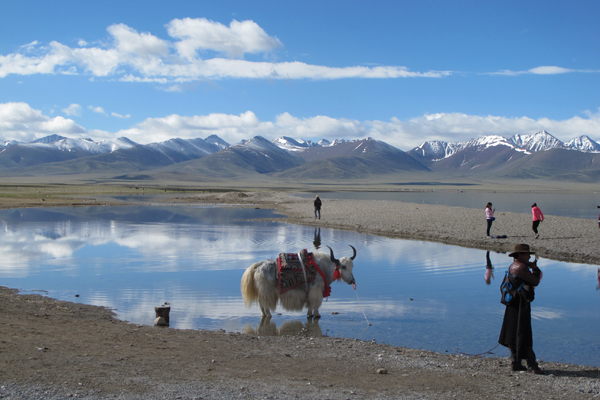Tourists ride the yak into the lake to take photos, and also amble along the lakeshore, with Yontan firmly holding the reins.
"Riding the yak once costs 30 yuan ($5) to 35 yuan," said Yontan, adding that last year he earned 20,000 yuan from the trade.
Yontan's yak generates half of the family's annual income, and he spends many hours with the animal every day.
Raising a rideable yak is hard work and also expensive, because the animals require plenty of forage, such as grass, flour and beans.
"More than 10,000 yuan has to be spent every year to raise a rideable yak, and a lot of hard work is required to take care of them," Yontan said.
Nearly 40 nomads on the lakefront operate yak-riding businesses, while about 90 own horse-riding businesses.
Some of the nomads own two or three "riding yaks", but Yontan just has one.
Compared with herding yaks and sheep on the grassland, the nomads consider yak-riding as a source of extra income, even though the work is not stable.
In addition to yak-riding, many nomads around the lake are engaged in tourism, in businesses such as horse-riding, selling tourist goods, and running shops, guest houses and restaurants.
|
 A nomad runs a yak-riding business on the lakefront during the peak summer tourist season. Palden Nyima / China Daily |
